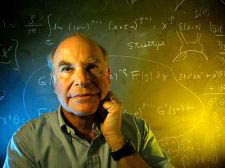 Caltech string theory pioneer John Schwarz explains science to the public |
These days, laptop computers employ technology scarcely dreamed of during the Apollo moon missions. Physicians prescribe gene-triggering drugs that were fantasy elixirs a decade ago. And microchips have become so small that they’re measured in billionths of a metre. But more than 80% of adults still are not knowledgeable enough to digest a science story in a major newspaper. So how do scientists learn to explain without dumbing down?
As science becomes more complex, more prominent in everyday life and more dependent on the support of the public for research — through the government grants funded by the taxes we pay — universities across the globe are reaching out to the ‘clueless’ — that means, you and me.
The goal is to nurture popular support for scientific endeavours by making them easier to understand. And, in a world where the hope for cures to most diseases rests with the skilled endeavours of biotechnologists, and where the very definition of democracy is being redefined by the advent and continued maturation of the Internet, the more we know about science, the implications of the research that is being undertaken, and the moral and ethical questions involved in that research, the better off we’ll all be.
Writing for The Los Angeles Times, science reporter Paul Pringle — in a story titled Dense Matter Indeed — records the thoughts of people like you and me, who suggest to scientists that by employing more descriptive language, developing eloquent process imagery, as well as public-friendly metaphors that science might be brought down to Earth.
At which point, each and every one of us will benefit, as we feel better informed and more empowered in yet another aspect of our lives. More acute knowledge on a subject is almost always a good thing.